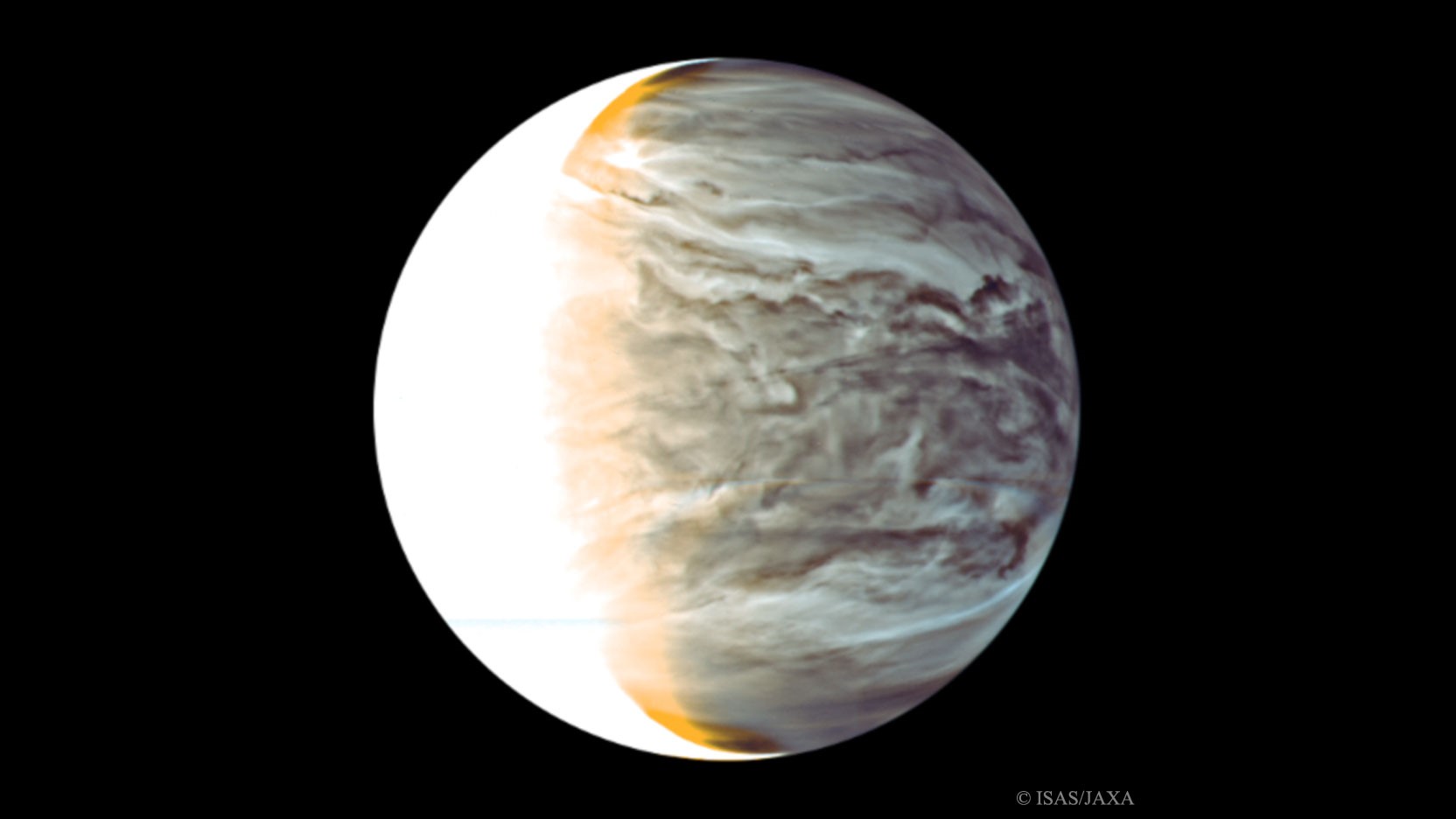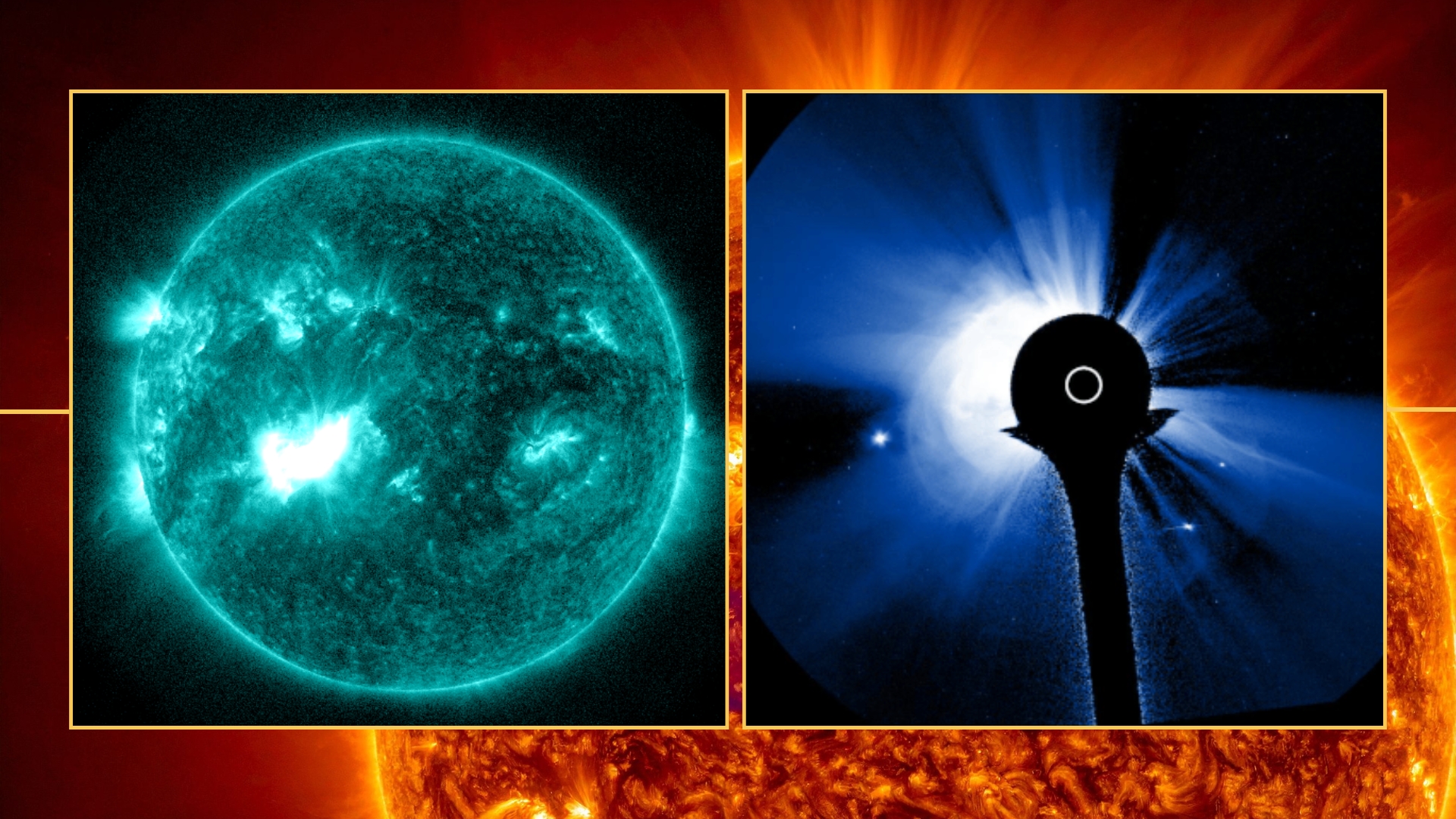NASA scientist explains why Venus is Earth's 'evil twin' (video)
At least three missions will go to Venus over the next 10 years.
A new NASA video makes the case that Venus is Earth's "evil twin."
The nefarious moniker is revealed to be, in a way, an apt description of why astronomers will be investigating Venus this decade. Scientists and engineers from NASA and the European Space Agency are gearing up to send three new missions to the second rock from the sun. They want to know a whole lot more about the nearby planet, which resembles Earth in so many ways, and yet is so strikingly different.
The video touches on a few nightmarish but intriguing aspects of Venus. For one, it's got a runaway greenhouse effect. The 15-mile-thick (24 kilometers) shroud of atmosphere is made of carbon dioxide and contains sulfuric acid clouds. The planet produces temperatures hot enough to melt lead. Lori Glaze, NASA's director of planetary science, said in the video that the Venusian surface can reach 900 degrees Fahrenheit (480 degrees Celsius).
"So it is a crazy place, but really interesting," Glaze said. "And we really want to understand why Venus and Earth turned out so differently."
Related: Scientists hail 'the decade of Venus' with 3 new missions on the way
At least three missions to Venus will fly within the next decade or so. There is NASA's DAVINCI, short for Deep Atmosphere Venus Investigation of Noble Gases, Chemistry and Imaging, which includes two major components. First and foremost is a spacecraft that will fly by Venus, capturing data about the planet's clouds and its terrain, in addition to acting as a telecommunications hub for the mission. Second is a special descent probe, which will drop down through Venus' thick atmosphere and collect data as it journeys through the perilous environment.
Another mission, called VERITAS, will become the first NASA orbiter to visit Venus since the 1990s. VERITAS is short for Venus Emissivity, Radio Science, InSAR, Topography and Spectroscopy. The spacecraft will develop a big-picture look at Venus and its history, aiding scientists who want to know more about its volcanoes and to determine whether Venus ever had water. The Italian Space Agency (ASI), the German Aerospace Center (DLR) and the French Space Agency (CNES) will also contribute to VERITAS.
Breaking space news, the latest updates on rocket launches, skywatching events and more!
Then there is the EnVision mission from the European Space Agency (ESA). The NASA-supported mission targets a launch in the early 2030s. When it reaches Venus, EnVision will try to learn why Venus became Earth's "evil twin," as the NASA video describes it. Specifically, it will study Venus' hostile atmosphere and its inner core to see how both planets could form in the same part of the solar system and with the same stuff, yet yield wildly different realities.
Perhaps soon, these missions will let us marvel at Earth's closest planetary neighbor.
Follow Doris Elin Urrutia on Twitter @salazar_elin. Follow us on Twitter @Spacedotcom and on Facebook.

Doris is a science journalist and Space.com contributor. She received a B.A. in Sociology and Communications at Fordham University in New York City. Her first work was published in collaboration with London Mining Network, where her love of science writing was born. Her passion for astronomy started as a kid when she helped her sister build a model solar system in the Bronx. She got her first shot at astronomy writing as a Space.com editorial intern and continues to write about all things cosmic for the website. Doris has also written about microscopic plant life for Scientific American’s website and about whale calls for their print magazine. She has also written about ancient humans for Inverse, with stories ranging from how to recreate Pompeii’s cuisine to how to map the Polynesian expansion through genomics. She currently shares her home with two rabbits. Follow her on twitter at @salazar_elin.

